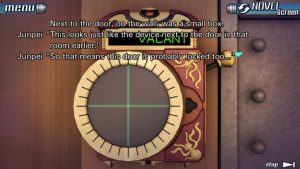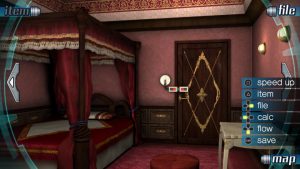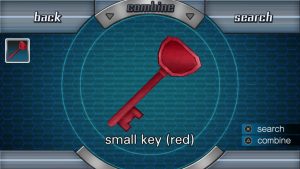My time with the Zero Escape series is a short-lived one. With only an hour or so of time spent with 999 on Nintendo DS and none at all with VLR on Nintendo 3DS and Vita. Was always interested in the games though due to the things I’ve heard and the mysterious and thrilling atmosphere they gave. Fortunately, the series was given new life by being remastered for Playstation 4 (and also for PC and Vita). Featuring a higher graphics resolution and newly added voice overs for the first game, it seemed like as good a time as any to check this series out once again.
The story of the Zero Escape series mainly revolve around a group of characters who find themselves in a situation where they need to solve puzzle rooms in order to progress further into a game titled The Nonary Game. It’s a similar situation that occurs in both games, but there are differences, like the cast of characters. They are linked though, and it is highly recommended to play 999 first and then to VLR. So it’s pretty nice to have both available in one package.
THE GOOD: As I mentioned, the big differences from this version over the originals is the increase in resolution. Just looking at screenshots alone, you can clearly see the presentation is much better in this newer version. It looks and runs great. There was some worries though, especially with the original 999 title, as it was developed for the Nintendo DS and the dual screens were a major component of its presentation.
This makes 999, the game that has changed quite a bit from its original version. A dual screen setup is somewhat present, but it’s now presented in the form of two modes that you can switch on the fly as you play the game. There’s the Adventure Mode, which presents the story of 999 in a more traditional manner with the usual text box and character sprites. Then there’s Novel Mode, which has the text shown over the entire screen. Not only is how they’re shown different, but the text they show is different as well. Adventure Mode only shows what the characters are saying. Novel mode shows that as well, but goes deeper by providing the inner thoughts of the main character and descriptions of what’s going on. So while Adventure Mode looks the most clean and cinematic and moves through the story faster, I feel like you’re missing out on a lot if you don’t have Novel Mode up. I also bring up the dual mode setup because it does play a crucial role in presenting the story in certain parts and I think it was a neat solution to simulating the dual screens of the Nintendo DS.
The biggest change to 999 though is the addition of voices. In the original DS game, it was only text. Thanks to the addition of voice work, which is available in English and Japanese, the story feels more alive and cinematic. This is also in part to how well the voices came out too. Also, it was nice of them to stay consistent with the voices of the series, with actors reprising their roles of characters they voiced in the other games. Certainly an addition that changes the overall feel of the game and may just be enough of a reason for long-time fans to pick up on the game again.
The Zero Escape series isn’t all about story though, as there are multiple puzzle rooms to solve and it’s what the series has become well-known for. A huge variation of puzzles that range from simple to quite complex. They’re very satisfying to solve, and offer nice a challenge. There were a couple puzzles where I did feel that they were asking too much in terms of how to reach their solution, but for the majority of them, I felt they were all fair and cleverly crafted.


THE BAD: While I did find the switching of Adventure and Novel Mode a unique and well-made solution for 999’s original dual screen layout, I did dislike how you can miss out on certain things when only viewing in Adventure Mode. The game does automatically switch over to Novel Mode for you, if there are important descriptions that the game wants you to know, but for everything else, you simply won’t know of it unless you’re viewing in Novel Mode. Yes, I could just view the entire game in Novel Mode, but I do prefer the presentation of Adventure Mode since the text isn’t covering the entire screen. So I thought it was a bit unfortunate that there wasn’t at least some third mode that combined the look of Adventure Mode with the extra context that Novel Mode provided.
Another thing that kind of became an unfortunate mishap during the jump to console is the game’s touch functionalities. Mainly with certain puzzles and using the in-game memo. For the most part, you can simulate the function of touch with a joystick, but it just feels very awkward and tedious to mess with. It’s not a huge problem since not everything is touch focused, but there were a couple puzzles that I did come across that I wished were better optimized for controls that lacked a touch screen. There’s also the in-game memo pad that is useful when playing, but a bit of a hassle to use since you’re controlling a joystick to move a cursor around as if you’re writing down something. A minor thing, but was disappointed they didn’t change up the functions to better suit the console player.


OVERALL THOUGHTS: After finally playing through 999 and VLR, I now understand why this series is so beloved. The story was a fun ride to go through with its many twists and conclusions. The puzzles were a joy to solve and provided a good enough challenge. With the addition of voice work to 999, even veteran fans have some reason to check out the games once again. A clever adventure experience from start to finish and one that I highly recommend others to check out.














You must be logged in to post a comment.